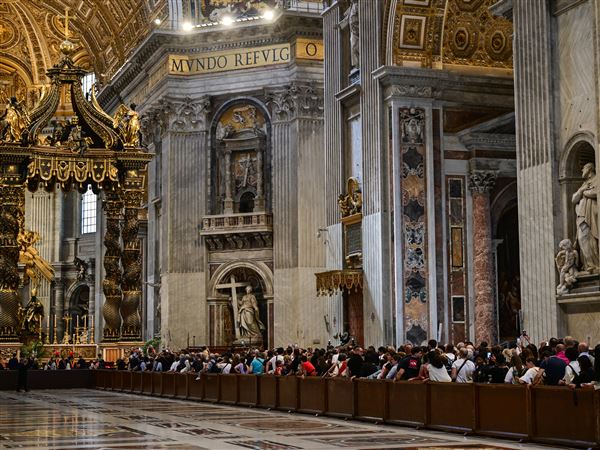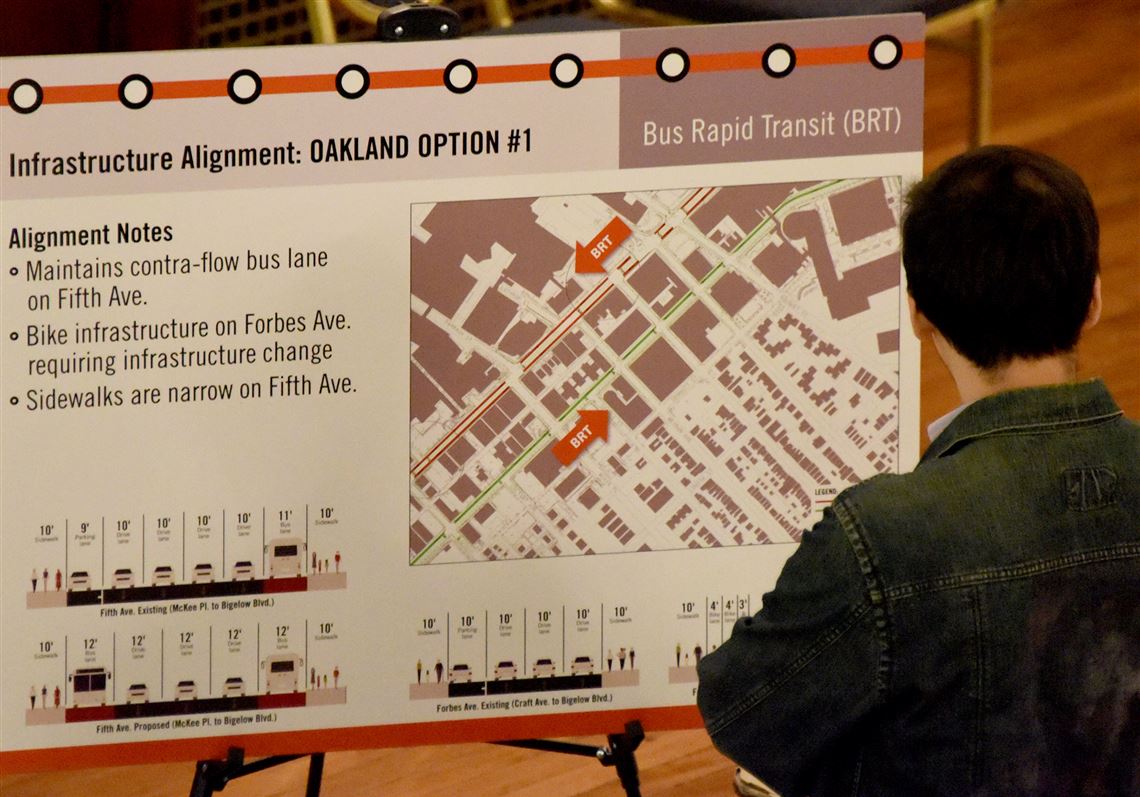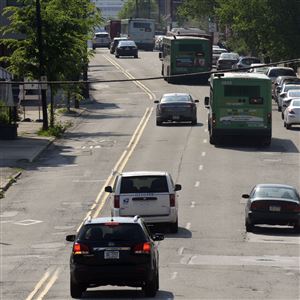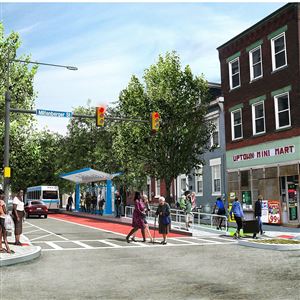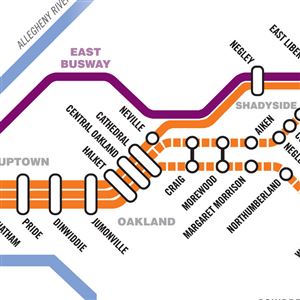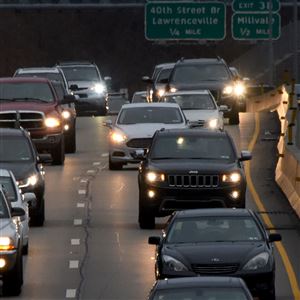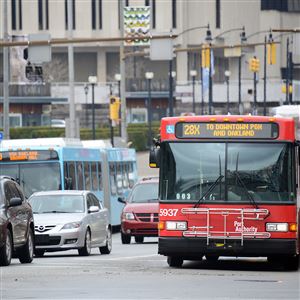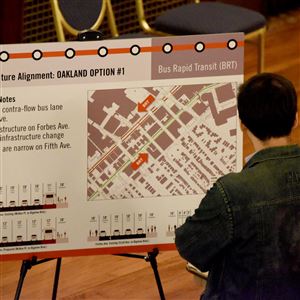Downtown Pittsburgh and Oakland are the second- and third-largest job centers in the state. But getting from one to the other can be a job in itself.
With that in mind, the Urban Redevelopment Authority of Pittsburgh, the Port Authority, the county and the city have endorsed a Bus Rapid Transit project that will improve service between the region’s two major employment centers and residential communities to the northeast.
The goal is a 10-minute ride between Downtown and Oakland. Members of the Southwestern Pennsylvania Commission heard details of the proposal Monday as part of a pitch to include it in the region’s long-range transportation plan.
Port Authority planner Amy Silbermann said the current system routes 19 buses through Oakland, nine of which head Downtown, with a goal of pickups every 15 minutes. But the result is the bunching of buses — with the first one packed and the next one almost empty — followed by a lengthy gap in service. Buses caught in regular traffic, she said, have been clocked at about the speed of a jogger.
Planners said the heart of the project will be the BRT Core, along more than 7.5 miles of Fifth and Forbes avenues between Liberty Avenue, Downtown, and Neville Street at Centre Avenue in Oakland.
Improvements, which would make riding a bus more inviting, include designated bus-only lanes, electric vehicles, coordinated and controllable signals, and updated stations with displays of bus arrival times. More consideration also will be made for bikes and parking.
Once in Oakland, commuters could continue to other neighborhoods on one of three routes:
▪ East Busway BRT — Following the current P3 route connecting the Martin Luther King Jr. East Busway and on into Wilkinsburg.
▪ Highland Park BRT — Running along the existing 71B route through East Liberty, Shadyside and Highland Park.
▪ Squirrel Hill BRT — Passing along the existing 61D route through Greenfield and Squirrel Hill.
The BRT Core would operate at least 18 hours per day, seven days a week and serve more than 31,000 riders each weekday on its core and neighborhood routes.
Allegheny County Executive Rich Fitzgerald said that while the project “has tremendous public support,” many people ask why light-rail vehicles can’t be used. The answer, he said, is that a light-rail project would cost $2 billion or more and take 20 years to complete. This option, he said, could be done for $200 million and in less than four years.
Besides, he said, “I almost hate to use the B word — bus — because this is really going to be a vehicle that looks like a train. A light-rail vehicle on rubber wheels. And the results will be traveling quicker, cleaner and safer through this congested corridor.”
Funding for the project, which would come from state and local sources, will be discussed at the commission’s Sept. 25 meeting.
In the meantime, residents are welcome to comment on the project either online at spcregion.org — between Aug. 16 and Sept. 15 — or in person at the commission’s Sept. 25 meeting.
Dan Majors: dmajors@post-gazette.com and 412-263-1456.
First Published: August 1, 2017, 2:00 a.m.

